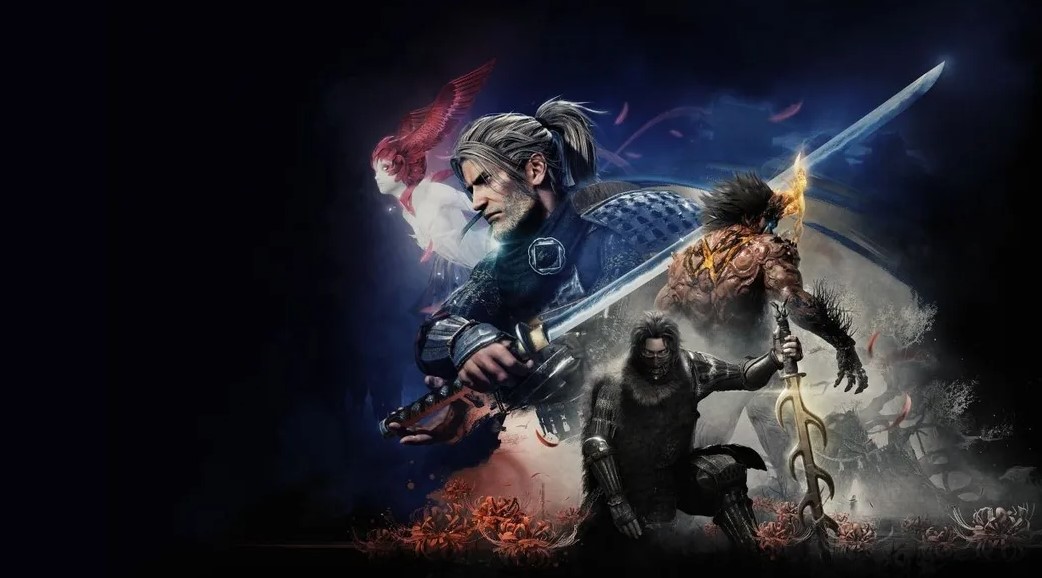Vampire: The Masquerade – Swansong Review – By Invitation Only
Vampire The Masquerade: Swansong Review
Vampire: The Masquerade – Swansong is a narrative RPG from Nacon and Big Bad Wolf Studios. Nacon is no stranger to publishing properties from The World of Darkness, a series of games that feature classic monsters such as Vampires, Werewolves, and even Wraiths and Faeries in their systems. They’ve previously published Cyanide’s Werewolf The Apocalypse: Earthblood last year to middling reviews, but fans of the property enjoy what they continuously offer.
Vampire: The Masquerade’s main premise is that vampires hide behind a conspiracy called The Masquerade to hide their affairs and business from the rest of humankind – their prey. They walk among them, take part in their business, and even allow some humans to join their ranks. Just like an elite club, once one becomes Kindred, you’re now part of their political affairs and follow a strict code of hierarchical conduct else suffer a Final Death.
In Swansong, you take control of three vampires in the midst of a crisis. Negotiation talks with the Hartford Chantry went awry causing the destruction of some high-ranking vampires from their cabal as well as your own circle, The Camarilla. The head of your cabal, Prince Hazel Iverson, has instructed the three to investigate what went wrong during this crisis and reveal the traitor amidst your midst.
Got all that? I wouldn’t blame you if you didn’t.
Them Fighting Words
If I would describe Vampire The Masquerade: Swansong for newcomers, it falls in between Detroit: Become Human and Vampyr. It’s predominantly a narrative RPG, meaning you learn skills and build your character, but it’s mostly exploration, investigation, and rap battles dialogue choices. If you’ve played Vampyr, there are a few “combat situations” here in Swansong, but nothing too action-oriented.
The gaming loop in Swansong definitely falls under the Detroit: Become Human paradigm, where you control three different vampires, each tasked with an investigation of the ill-fated party. You take the roles of Emem (featured on the cover), a flamboyant club owner tasked to soothe relations with an opposing vampire cabal; Galeb, a traditionalist, who’s tasked with investigating the domicile of its only survivor; and finally Leysha, a seer, to investigate the crime scene.
Each vampire has its own unique physical discipline, such as Emem who has Celerity (teleportation), Galeb is more combat-oriented, and Leysha has stealth. However, their investigative and speech traits are more uniform, where you can tailor-fit each vampire with their own style of uncovering information. You can make one vampire more persuasive, intimidating, or more logical, and it allows a better handle of the RPG aspect of the game, which makes the narrative gameplay more interactive than just inputting quicktime events.

Furthermore, you get to manage two resource types for each vampire in Swansong. Focus is used to improve skills such as dialogue battles when attempting to obtain information from an opponent. Some opponents wield better intrigue and oppose your “attack” where you can succeed, fail, or fall into a tie-breaker. I found this mechanic fun but at times ingenious as many RPGs just fall under “put this many skill points on Charm or Speech and let RNG do the trick”.
You can also use the other resource type, which is the utilization of your Discipline (vampire talents). This increases your Hunger meter, which has an effect on other actions. To slake your hunger, you feed on humans or other sources. Disciplines are more powerful than skills and can actually give you a better boost in Swansong, but I personally like the exploration use of it more than when using it in dialogue. (More on that later)
At the end of a Scene (chapter), the game lists your successes, failures, and alternate paths you could’ve taken. Through these actions, you receive experience points and permanent traits based on your decisions and how they carry over to the next chapter. As a tabletop RPG player, I feel that more games could use this type of gameplay moving forward, especially narrative games.
Uncover The Truth
The gameplay loop in Swansong involves starting a Scene with each of your characters or a joint Scene where all characters are present. At the start of each Scene, you can allocate your experience points to power up Attributes (Physical, Social, Mental), Skills, and Disciplines that will help you traverse the Scene. It’s pretty neat how you get to mold a vampire’s personality to your liking, but it doesn’t exactly play out the way you think it would.
I really feel that Swansong could’ve utilized its Exploration phases better because they felt quite basic. The levels are small and many of the pieces required are either gated behind higher skill tiers or not having the right character with the right skills. In a way, especially during your first playthrough, areas are gated because of the lack of skills.
It’s quite frustrating choosing dialogue options or skipping locked doors because of this lack of skills. Call it a personal nitpick, but the autosave doesn’t really allow you to play with the RNG to get a lucky break with some dialogue options unless you opt to restart a level. After the third time hearing the same dialogue, I’ve moved away from this strategy.

On some levels, the puzzles really are quite obtuse and it devolves into a strategy of trial and error. There is so much backtracking in Swansong, and sometimes restarting because you didn’t allocate the correct amount of points to access actual main quest puzzles. There were times when I restarted the level, but I just missed a consumable earlier in the game to improve a Discipline to actually pass a requirement.
It also doesn’t help that the brightness options for some levels are uneven. Dark areas are really dark that you miss out on some pieces. While we’re commenting on some visual nitpicks, some of the facial animations are also off-sync in Swansong. It didn’t bother me too much, but after a few restarts, they’re quite noticeable.
The first playthrough really felt like a slog with these issues. Each scene usually plays out around 2-3 hours depending on how quickly you clear exploration. There are 12 Scenes altogether, giving you between 18-24 hours to complete the first run. For newcomers, that would vary depending on how much time you will spend on the Codex, but I’ll talk more about that later.
For Members Only
I feel that the magic of Swansong is in its replayability. There are alternate routes to complete a Scene that forms a complete picture of the whole mystery. After you’ve completed your first run of the game, it is encouraged to go through the game again to complete certain routes that you’ve missed due to the aforementioned lack of skills or find out secrets that you’ve overlooked.
This is provided that you actually enjoyed the world that Swansong builds for you.
I feel that much of Swansong, especially for newcomers, can be so saturated with deep lore hidden behind a chunk of Codex text. I do appreciate that the Codex is introduced to the player slowly as you come across new terms, meet new people and clans, but that also means a lot of reading. Long-time fans of the game would probably understand the references, but newcomers will have varying degrees of being able to relate to the subject matter.

At this point, a newcomer’s mileage may vary, but Swansong will really test much of their patience. It involves a lot of reading, which is par for the course for the property as they were originally presented in RPG books or flavor text in the Collectible Card Game. I’d like to give a bit of caution for the gamer thinking that there would be some action in this game because if you’re expecting action like in Vampyr, I would manage that expectation.
You do get to drink human blood in Swansong, so there’s that.
If you’re patient enough to revisit Swansong to explore many of its alternate paths, your patience could be rewarded. There’s a bit of catharsis when you start putting some of these elitist vampires in their place by succeeding in dialogue battles and knowing what to expect moving forward.
What we liked:
- A more involved dialogue skill mode where not only do you deal with RNG but control how it plays out with skills and disciplines.
- Varying degrees of alternative choices that allow for more branching stories thus improving playability.
- Play as three different vampires with unique skills besides investigative and speech skills.
What we didn’t like:
- Newcomers have a lot of catching up to do by reading so much codex for the lore.
- Puzzles are quite obtuse and take a lot of thinking outside the box.
- Lack of skills gates you from discovering or fulfilling many tasks on the first try.
- Visuals especially lighting effects are uneven and facial animations are at times off-sync.
Verdict: Wait For It.

For fans of the series, Vampire: The Masquerade – Swansong would hopefully quench your thirst until the eventual release of Vampire The Masquerade: Bloodlines 2. However, I feel that newcomers to the series will have varying degrees of enjoyment regarding the lore, and if you’re not a fan of reading, it’ll be a bumpy start.
The magic of Swansong is that succeeding playthroughs will definitely get better as you learn more of the lore and paint a complete picture of the whole mystery. If you have the patience for all that legwork, more power to you to be able to unravel every one of its mysteries. It also really doesn’t help that the puzzles are quite obtuse and the visuals aren’t as inviting as something like Vampyr or Detroit: Become Human.
The first playthrough is a bit of a slog, but if you see it through even after the end, you will be rewarded for your resilience; which unfortunately won’t be for the newcomer looking for more visceral vampire action. It might appease the ardent fans who’s had years of exposure to the culture and jargon of the Kindred, but if you’re not a fan of the clans featured, it might also be a deterrent rather than an invitation.
*Vampire: The Masquerade – Swansong was reviewed on a PS5 with a review code provided by the publisher.



